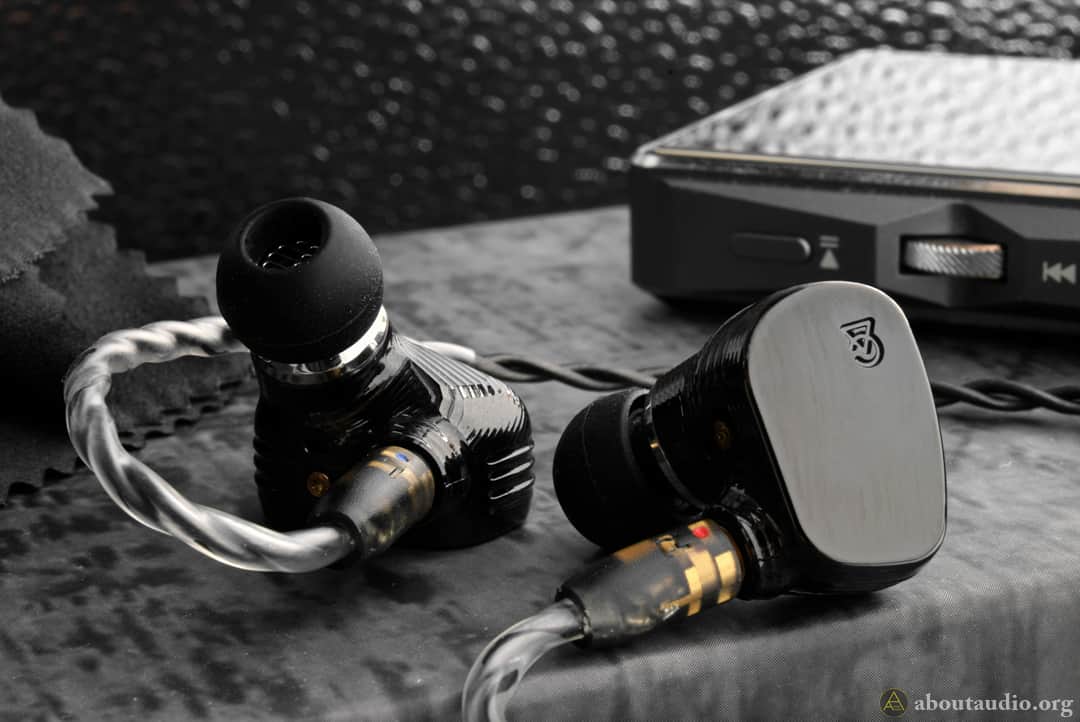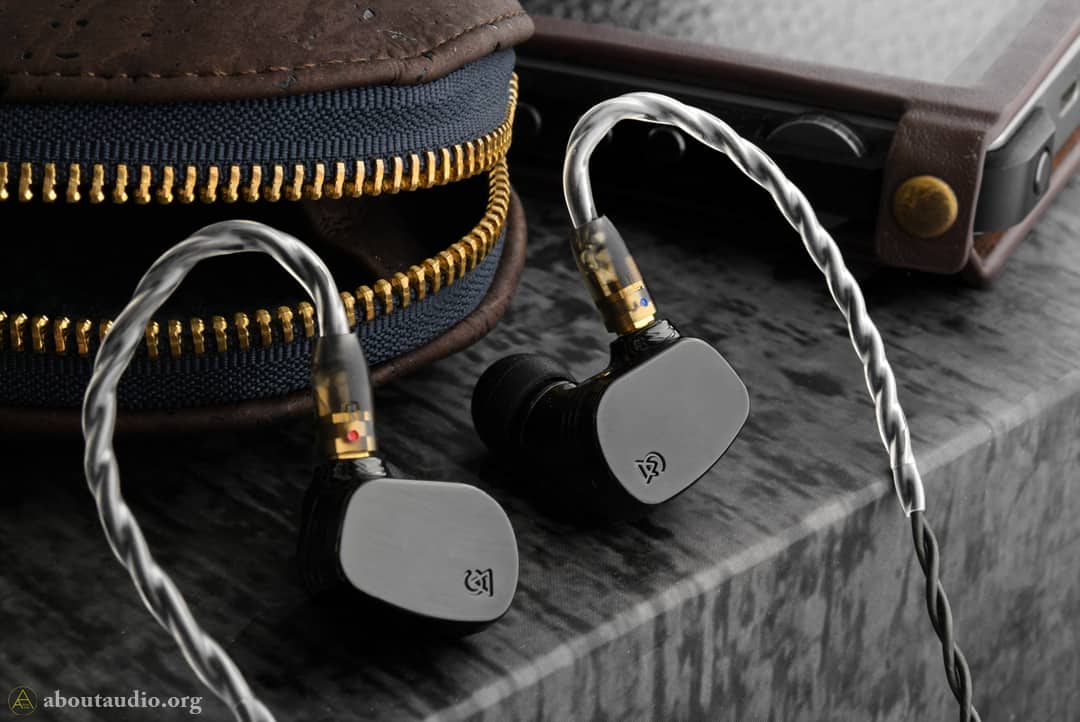 Campfire Audio Solaris 2020 Review: Gently ripen
Campfire Audio Solaris 2020 Review: Gently ripen
The popular brand from the portable audio industry, Campfire Audio, has come up with a new stream of products – Ara, Andromeda 2020, and Solaris 2020. The original Solaris used to be CA’s most expensive product as well and gained a great amount of interest throughout the community. Now they have released Solaris 2020, a refined/retuned version of the original one where many elements have been adjusted, inside and outside. Let us now cut to the chase and see how this new version performs along with making comparisons.

 Packaging
Packaging
Campfire Audio finally went through some revamp with their packaging and I am happy about it. There are lots that do not pay much attention (or not at all), which is very reasonable. But I believe better packaging and boxing do matter when talking about premium IEMs. The size of the new packaging still goes for a reasonably small box but roughly twice the bigger than the old ones. Once you remove the CA sticker on the rear of the box, the outer packaging would unfold and reveal the inner box which includes all the belongings. I very much enjoy this new packaging as they are beautifully designed inside out and gives a feeling as if you are unboxing a present. This phase of lineups has a flower theme to it as it is apparent to the box design.
Other than the earpieces, it includes 1 set of 3.5mm stock cable, 1 leather case, 3 pairs of earpiece pouch, 5 pairs of Final Audio eartips, 3 pairs of CA eartips, 3 pairs of CA foam tips, 1 CA Lapel pin, and a cleaning tool. CA used to provide only 1 pair of earpiece pouch before, but it seems like they have realized the demand for it and started to throw in an extra 2 pairs – which I appreciate a lot. The lather case is also newly designed to have the same color as the earpiece. The size also got appropriately larger with a wider opening, now making it more convenient when storing the IEMs with thicker cables. It is also worth mentioning that the case material has now changed to sustainably harvested cork which is economically friendly and even durable than leather. The size increase also happened to the earpiece pouches as well, making it easier and smoother to store the earpieces.
 Earpieces – Design
Earpieces – Design
For those who have used or experienced the original Solaris, you could have been challenged or overwhelmed to get the proper fit, especially if you have small ears. Although I personally did not struggle much to get them in my ears, they sure were bulky. Due to that reason, CA brought a 20% reduction in size, including the thickness while maintaining the overall shape and design that Solaris used to have. The edges got slightly rounder than the original, but still keeping the same looks and vibes.
While its particular design may make them look to still appear big, the difference gets very apparent and sensible as you actually wear them. The earpieces are now surprisingly small and would snug right in the ears without any sense of bulkiness, unlike the original Solaris where the fit rather felt as if the earpieces were dangling from the ears. The cavity is fully coated with a sleek black color with much finer texture whereas the original Solaris has been applied with a glittery gold faceplate which was vulnerable to getting chipped off. Now, the faceplates have been changed to a glossy yet not-cheapy looking finish, making us much easier to keep them in a clean state.
 Earpieces – Specs
Earpieces – Specs
Let us now cover the internals of this urbane-style IEM. Solaris 2020 is comprised of a 3BA+1DD configuration per side. All applied with CA’s classic chamber tuning, T.A.E.C, two custom-made BA drivers are for the highs with 1 rear-sided BA driver placed the mids. The included 10mm A.D.L.C dynamic driver is the same one used for Atlas, taking charge of lows and mids. Yet for Solaris 2020, the dynamic driver is topped with the Polarity Tuned Chamber, plus the custom-tuning in order to make harmony with the BA drivers.
The shape and size of the nozzles stay the same – however, due to the smaller cavity, there is a good amount of chance that you would be able to achieve deeper insertion as you wear. It must have been challenging to get the 20% smaller earpieces packed with not only the drivers but also the chambers and other components, though it still happened. Will the size reduction negatively affect the sound? Stay yourself tuned as we soon move on to the sound impressions.
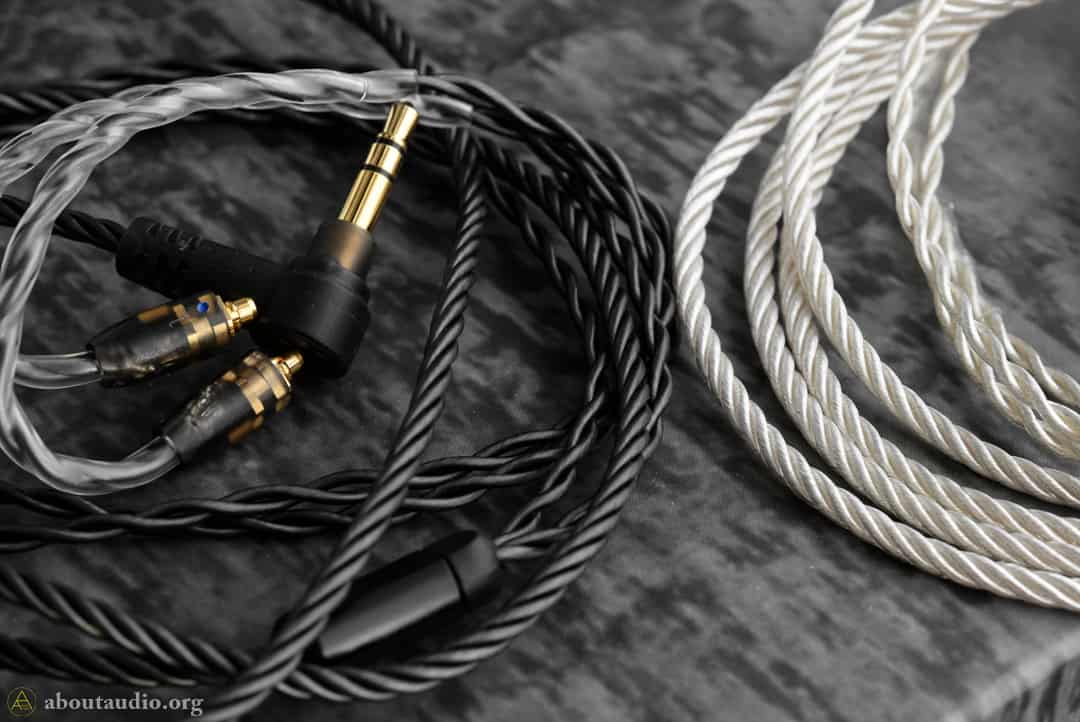 Cable
Cable
Previously, the beloved Litz cable was updated to Smoky Litz, and now it is time for the Super Litz to go through the same. Solaris 2020 comes with Super Smoky Litz which is made based on the one from the original Solaris but now even better. The sleeves now have a grey color while the original transparent sleeves were versatile to oxidation and discoloration. I can also feel that the cable got softer and more pliable. CA has also removed the metal rod from the earguides and installed the memory tubes only, making the earguides to snug right around the ears.
I am very glad that they have made this change as the original Super Litz was a tad stiff, along with the metal rods inside the earguides made things worse. Super Smoky Litz is made of thick silver-plated copper Litz wires, braided to have 4 cores. The cable is terminated as MMCX-3.5mm, just as usual. It would have been better to see some extra functionalities or accessories regarding the cable termination as an IEM in this level of price would have no small amount of needs for balanced outputs. I wonder if CA will have plans for applying changeable plugs later on. Perhaps the future will tell.
 Sound impression – Lows
Sound impression – Lows
Lows feel to be gently pressurized to the bottom of the headroom where the bass not only adds stability as the bass is getting driven but also prevents the reverbs from bouncing upwards and leaking into the lower mids. The bass is toned to have a serious, dark, and classy mood where I find it to be one of the most charming basses I have heard. The surface of the bass is polished smooth but able to catch small bits of details, hence growls from the bass are prominent but do not get grainy or dry.
Alongside, lows would dive gently but with superb clarity and depth that makes Solaris 2020 possible to pick up the ultra-low details very vividly without any need to overpower the quantity. Since that, while this IEM oozes with deep, dark bass presence, the bass production itself is kept very well leveled and balanced throughout the range. What I also appreciate from the lows is its field-like bass area that scales wide. It gently and carefully spreads out sideways, posing an elegancy that feels profound yet not burdensome. Yet still, Solaris 2020 does not put behind acquiring the density as the vast bass expansion does not thin out the density one bit. Lows are packed with deep, meaty particles and texture, keeping its stout stance all along.
 Sound impression – Mids
Sound impression – Mids
With no dips or unnatural turbulences being made, mids take a small step forward with a stable transition from the lows. The vocal tone is moist, deep in color, and organic but not plain. Mids are smooth yet revealing just as Solaris 2020 did with its bass, yet in mids, the analytical level goes much higher and exposing the texture details in a more explicit manner. One of the key highlights from the mids is its fabric-like texture. This does not recess the vocals but instead greatly helps to form a nice virtual presentation where the sound feels to be coming out from a heavy build speaker. I personally find this quite interesting for a hybrid IEM as the dynamic driver and the balanced armatures sound so unified and seamlessly connected in order to create this certain texture.
The temperature is neutral warm on the lower mids and gets cooler and fresher as we move upwards. Hence mids and upper mids persist a mild coolness and airiness that opens up the atmosphere. It also brings out more crisps and bites to the sound that goes further on making clear distinctions, but at the same time not breaking the harmony. The sibilance area on the upper mids is well handled by replacing possible spikes with a touch of spice. This “spice” actually holds a major role as it serves as a refrigerant to freshen up the lower-end atmosphere which is rather deep and warm. The sound rays on mids show a well-padded thickness that is just mildly thickened from neutral. Thanks to that, vocals sound full-bodied and bold enough to continue Solaris 2020’s robust sound signature while satisfying both male and female vocals.
 Sound impression – Highs, etc.
Sound impression – Highs, etc.
Highs take a small step back than the mids and similar in the distance as the lows. Yet they firmly hold onto the clarity that makes them just as clear as the vocals if not clearer. Treble strikes are very crisp and agile where they show instant strike and decay, barely leaving reverbs except the airiness that they carry. Of course, the natural splashes are not omitted but only highlighted to the point where it would not stuff up the upper atmosphere. With a highly refined, smoothened texture, trebles present to a silk-like fineness that is smooth but capable of highlighting all the small bits of sparkles and treble layers. The timbre is on point with naturality which leaves a rich aftertaste, making every bite of trebles sweet and tasty.
Following the legacy achieved from the original, Solaris 2020 presents one large and wide staging. The depth is super dense and thick in color with moist and full upwards extension, forming a 3D headroom while not breaking the imaging accuracy. As some Campfire IEMs did back then, there are some white noises present due to its impedance but the black background compensates in order to achieve the quietness. Also, the white noise will not be too sensible unless the track is paused. As we head to the end of the impressions, I would like to quickly talk through the eartip recommendation. After some tip-rolling, I have found that JVC Spiral Dots++ worked out the best for me than others (stock Final E-Type, other Spiral Dots, etc.) The tone and texture just sound perfectly right once I use these, so I would recommend giving those a try if you own or planning to grab Solaris 2020.
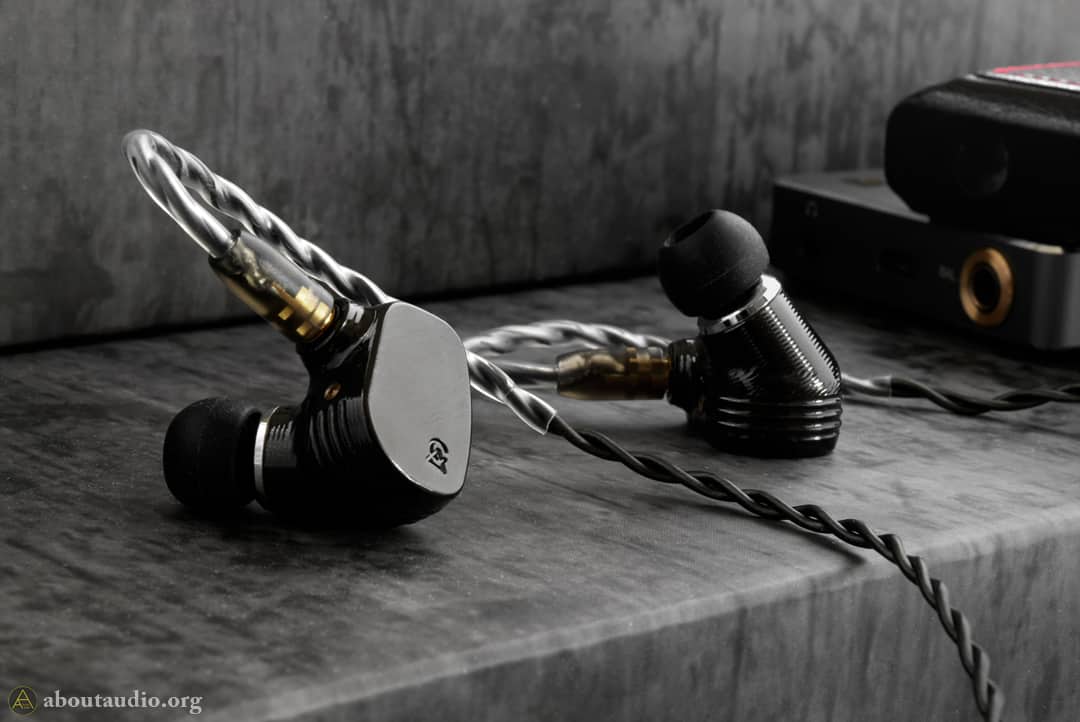 Comparisons
Comparisons
-Campfire Audio Solaris OG (Original)-
The first IEM to put up to the comparison of course needs to be the original Solaris, which I would refer here as Solaris OG. The first general difference I have spotted between them is the imaging/staging style. It may feel to be a subtle change but once you dive deeper into their sounds, the changes turn out to be quite big. Solaris OG creates a headroom that is more “up in the air” with slightly wider expansion. This greatly helped the sound to feel rich and headphone-like, yet at the same time, it also caused where the sound may feel a bit light-weight (especially the bass) or not enough of “touching the ground” type of stableness. Solaris 2020 now has all that by putting up the sound closer that gives better immersion. The bass response has improved as well by achieving more depth, punchiness, and intact feeling to the ground.
Another difference I have spotted is to do with the tone. Solaris OG had mildly hyped upper ends and having the extra finesse as a topping while Solaris 2020 sticks to the basics by keeping a natural, unexaggerated tone that is equipped with elegance to its nature. Although the upper ends got comfier to listen, that doesn’t mean the charms have been degraded – as, in fact, highs are as equal or got even more attractive depending on your taste, since the more natural toning. However, at the end of the day, I would put both IEMs on the same level and put it as a tie since both IEMs share the same trunk with just the different branches. Some will enjoy the original while the others (and those who disliked OG for the reasons mentioned above) will enjoy the new version. All based on preferences, which are done by gives and takes.
I would also like to compare Solaris 2020 with Astrotec’s flagship IEM, the Phoenix. Note that I have accompanied Phoenix with the Aune B1 amplifier since it requires high power by nature. The way how low-end texture and the punchiness are presented is quite similar between these two as those elastic, weighty bounciness from the diaphragm takes a huge roll in the bass. The audible bass extension is equally nice, appropriately mining out that deep and dark force oozing out from all the way down. However, the ultra lows from Phoenix are tighter and even less bloated with reverbs, therefore making a clearer presence. On the other hand, ultra lows show slightly better visibility as they pose more quantity and vibrancy. Upper lows are rather similar in quantity.
Relatively speaking, the texture from Solaris 2020 is more revealing with slightly thicker grains. Of course, the fineness and resolution are not falling behind one bit – in fact, it is equally if not mildly better than Phoenix as Solaris 2020 shows once stellar resolution. While that, Phoenix comes with a counterattack by forming a smoother surface with finer grains. Solaris 2020 takes a reasonable lead once we move on to the trebles. While the extension from both IEMs is on a similar league, Solaris 2020 shows more energy that makes them stand out clearer than Phoenix does. The treble strikes are also more elastic, hence it leaving with a tastier note.
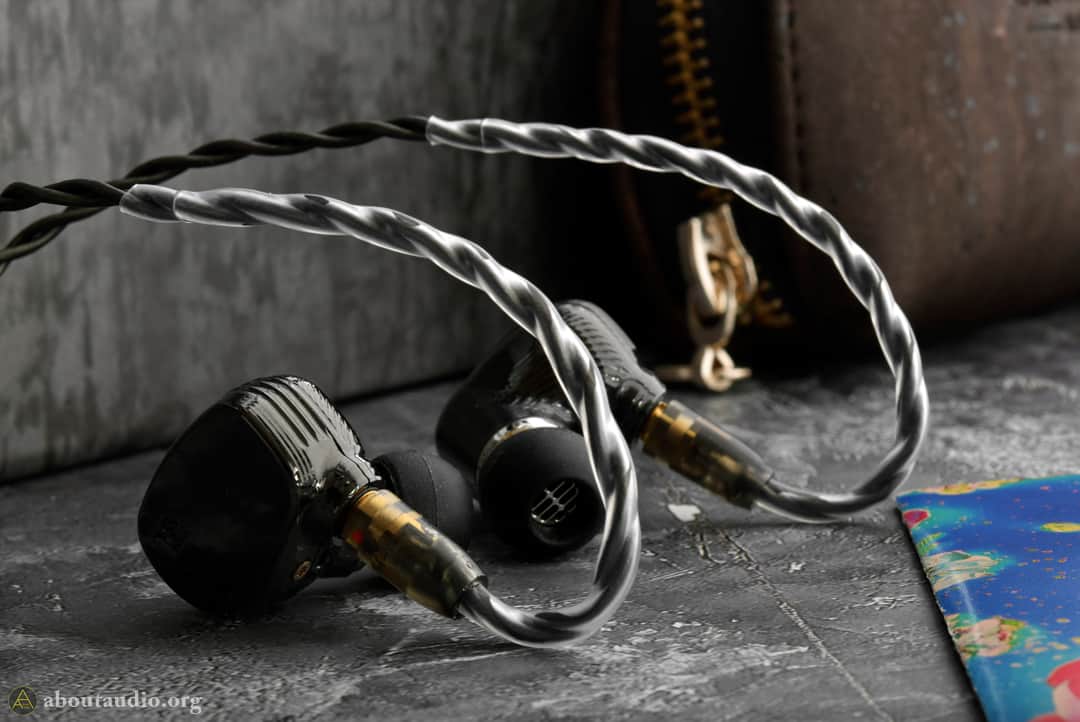 Verdicts
Verdicts
Solaris 2020 is a fine example of a brand paying close attention to what the consumers want. Campfire Audio has gone through necessary changes inside out, making the usability a lot lesser in hassle. A retouch to the sound has also been done for those who wanted a different perspective from the original Solaris, all while not abandoning the charms the original Solaris had. Solaris 2020 definitely has a noticeable advantage fitting-wise, yet the retouch to the sound has been done very respectfully, as the competition between the new and the original is more of a yin and yang type of situation – both the original Solaris and the Solaris 2020 having an equal level of charms and performances, hence the personal taste would be the one that would decide which one would be better suitable for you.
For the original Solaris owners – rest assured. If you had to drink a bitter cup for not being able to fit the original Solaris properly into your ears, then it is definitely recommendable to try again with the Solaris 2020, as now the chances for you to achieve the right fit are much higher. When it comes to the sound, Solaris 2020 is not meant to kill off the original but to give a complete “Solaris experience” by providing both perspectives from the same base. If weighing a bit more on the lower-ends with a further neutral tone is what you want, listening to Solaris 2020 must be included in your to-do list.
RELATED REVIEWS
Andromeda (original) / Polaris II / IO
Thanks to Campfire Audio for providing Solaris 2020 in exchange for an honest impression/feedback.
I am not affiliated with Campfire Audio and none of my words were modded or asked to be changed.


